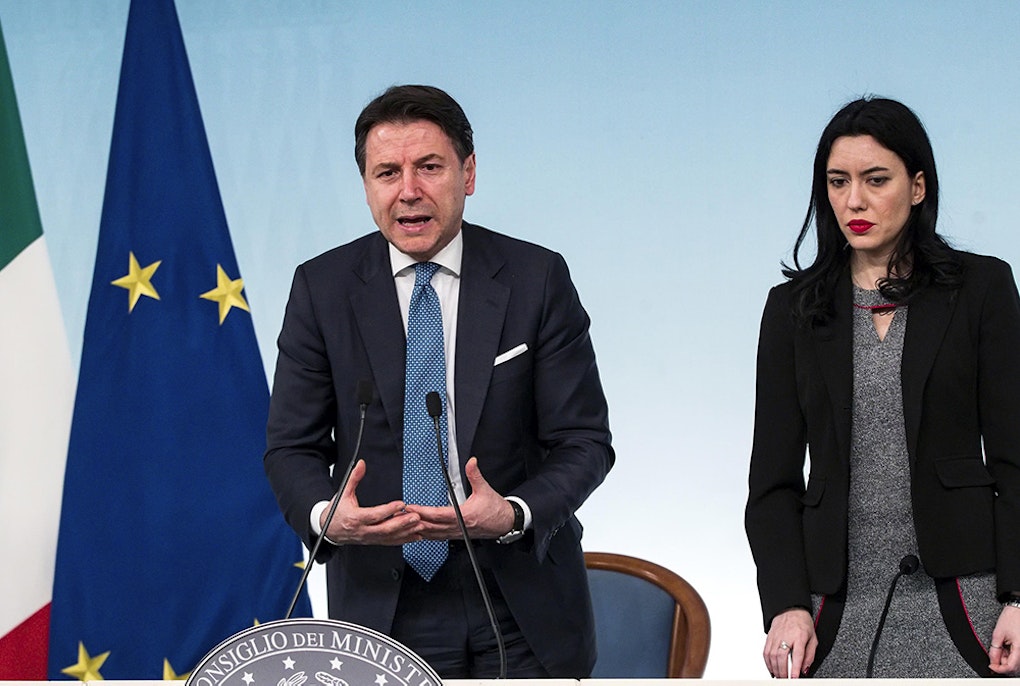
Us vs Them: A Game of Mirrors
 Roberta Medda-Windischer
Roberta Medda-Windischer
Facts and legal framework
Italy was the first European country to be hit hard by the coronavirus pandemic and has suffered a high number of casualties – over 30,000 as of early May. For various reasons, the mortality rate is higher than elsewhere in continental Europe. Italy was therefore the first Western country to declare a state of emergency and to impose a strict lockdown.
On January 31st, a state of emergency was declared by the government for a period of six months. The constitution does not contain provisions on the state of emergency. However, it states that, in case of necessity and urgency, the government may adopt law decrees as in temporary measures having force of law, which are valid for no longer than two months unless they are adopted as formal laws by Parliament in the meantime ,art. 77. The state of emergency was declared based on a statutory, not a constitutional, provision: the Civil Protection Act 2018, which empowers the government to adopt any necessary measure within the limits of the general principles of the legal system. On February 3rd, the first of a long list of such measures was enacted. On February 23rd, the first law decree was passed and subsequently transformed into law by Parliament on March 5th. Since then, seven more law decrees have been adopted, plus laying down detailed rules on allowed and prohibited activities, and several more administrative acts by individual ministries.
The management of the state of emergency is clearly in the hands of the national government. The regions are to be consulted prior to the adoption of national regulations, but they cannot oppose measures taken with the overarching purpose of protecting public health and national security. The regional governors can adopt their own regulations, although only to the extent that is allowed by the national legislation or to introduce stricter rules than the national ones. For example, during the 50 days of rigid lockdown, the regions could tighten the security measures and restrictions in relation to permitted activities, the distance from home that people could walk, and the use of face masks. On top of the national regulations, a flood of regional,over 600,and municipal provisions was thus passed, generating criticism for adding confusion rather than clarity to the control measures.
No doubt, the response to the emergency produced a strong centralisation of powers, both horizontally, from parliament to the government and vertically from the regions to the centre. The national regulations stressed the need for better coordination among the levels of government, which in the end meant coordination was steered from the top down. Especially in the first phase of the emergency, in March and April, such centralisation was generally supported in the political and public discourse. The main newspapers sharply criticised the attempts by some regions to introduce small changes, even though this was allowed by national legislation. Conversely, more rigid regional measures were generally applauded, such as in the case of southern regions, further limiting the movement of people returning home from the north, which has been affected much more severely by the pandemic than the south.
The national government has so far been extremely adamant in opposing regional attempts to act upon their own initiative. When, in February the governor of Marche, a region in central Italy that, at that time had not had a single case of infection, publicly declared his intention to close schools, he was called by the Prime Minister during the very same press conference. The regional act was immediately challenged before the administrative court and suspended.
Things began to change at the beginning of May, when the pandemic slowed down, the pressure on the health system became less acute, and the government partially lifted the lockdown. In that moment, the regions came back in the picture. The regional governors asked the government for permission to decide autonomously how and when to restart activities. The government postponed the decision on this issue, making it dependent on the health authorities, who remain very cautious. This time, however, regions did not give up and went ahead with their own measures, sometimes openly challenging the national government. This was due to three main factors: the growing pressure on the economy, which had been devastated by two months of rigid lockdown; the very different impact of the virus in the various regions, with the industrialised northern territories being hit dramatically, in contrast to the south where numbers have always been limited -see map; and the re-emergence of the political divide, with the regions led by centre-right parties opposing the centre-left majority in Rome more strongly.
The region of Calabria, in the south, which currently has a small number of infections and has a centre-right regional government, issued a regulation to reopen many bars and restaurants as of April 30th. The national government challenged this regulation and the administrative court struck it down on May 9th, acknowledging the exclusive to regulate the emergency. Other regions are moving in the same direction. The autonomous province of Bolzano/Bozen, the northernmost territory predominantly inhabited by a German-speaking minority and ruled by the party representing this minority, made use of its broader autonomy and even adopted its own law on May 8th, providing for the complete restart of activities, far ahead of the rest of the country. The government challenged part of the law before the Constitutional Court but kept the conflict on a low political scale.
The pandemic will influence the development of Italy’s regional system and is likely to further polarise the debate. Ironically, the more affected regions are those in the north that were in the process of negotiating broader autonomy – as allowed by the constitution, art. 116.3 -, including in the area of health care, which performed relatively well despite the severe cuts over the past decade due . Sentiments against regional autonomy are on the rise, but so are the calls for differentiated responses to different situations. Some conflict between the centre and the territories is necessary for the development of federalism. Striking the right balance between conflict and cooperation is another matter entirely.

Tested positive – Map by Civil Protection Department, 10 May 2020
This article was first published here – http://www.forumfed.org/wp-content/uploads/2020/05/ItalyCOVID.pdf
 | Francesco Palermo is professor of comparative constitutional law in the University of Verona and Head of the Institute for Comparative Federalism at Eurac Research in Bolzano/Bozen www.eurac.edu/sfere. He is the President of the International Association of Centres for Federal Studies (IACFS) http://iacfs.org/. |
This content is licensed under a Creative Commons Attribution 4.0 International license except for third-party materials or where otherwise noted.

 Roberta Medda-Windischer
Roberta Medda-Windischer
 Karl Peter Kössler
Karl Peter Kössler
 Andreas Dibiasi
Andreas Dibiasi